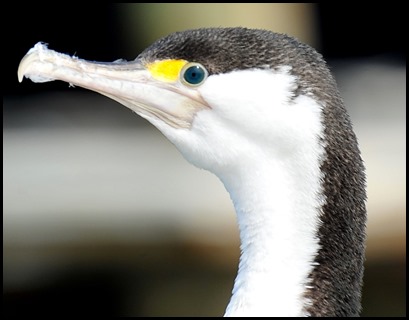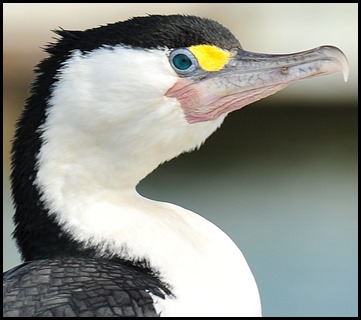Pied Shag

|
The Pied
Shag
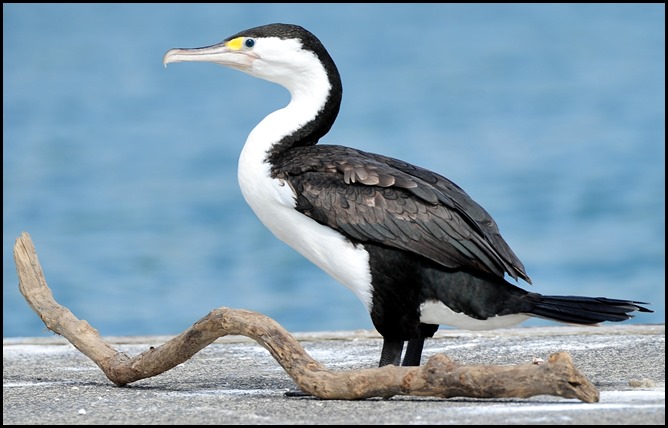 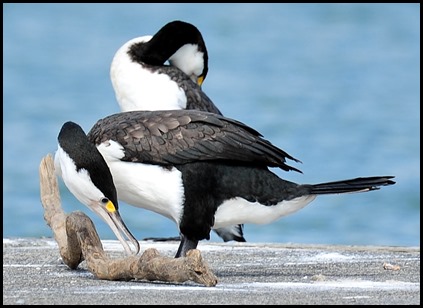 Spuddling in and out of the
marina in Baby Beez, we have to pass by the far end of the Quarantine Dock used
as an ordinary berth. The space at the end has become a meeting, preening and
resting place of the local pied shag – a new chap on us – known locally as karuhiruhi. Shags
are swift underwater swimmers, with a sharp hooked beak to help them catch fish
and small crustaceans. They are often seen sitting on a perch with their wings
spread out, drying their feathers. This is because a shag’s feathers are not
waterproof. This makes it easier for them to dive and stay under water for an
average of 20 to 30 seconds per dive (the observed record is 225 seconds).
But it also means the birds quickly get waterlogged and cold. So after a bout of
fishing, shags must spend a lot of time preening and drying to restore their
feathers and warm up.
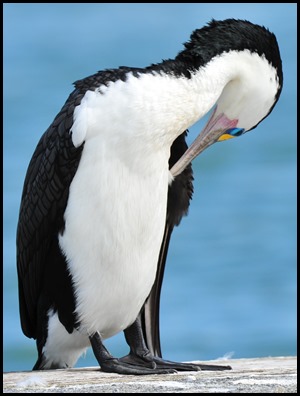 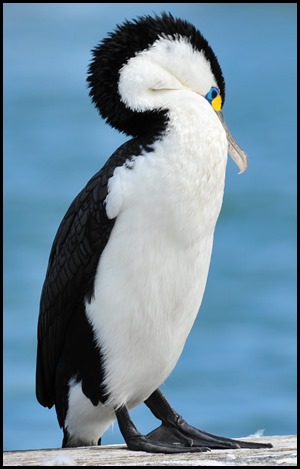 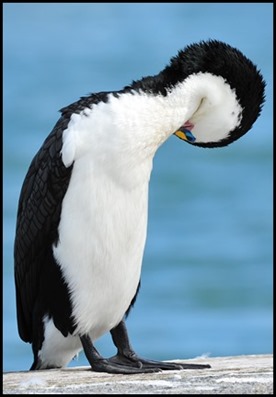 A good
tidy up..............
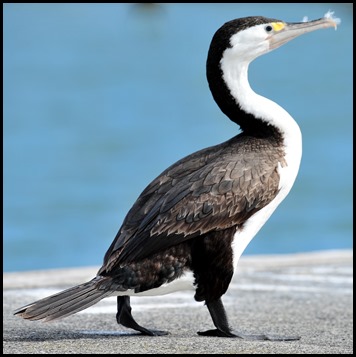 ............but fluffy bits get stuck to the beak, not
a good look.
It is probably the pied shag that Sir Joseph Banks refers to in the following quoted at Mercury Bay on the 10th of November 1769:- “The water was shoal so we agreed to stop our disquisition here and go ashore and dine. A tree in the neighbourhood on which were many shag’s nests and old shags sitting by them confirmed our resolution. An attack was consequently made on the shags and about twenty were soon killed, and so soon broiled and eaten, everyone declaring that they were excellent food, as indeed I think they were.” 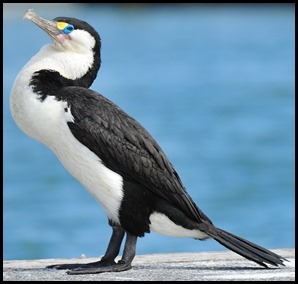  A bit of
strutting.
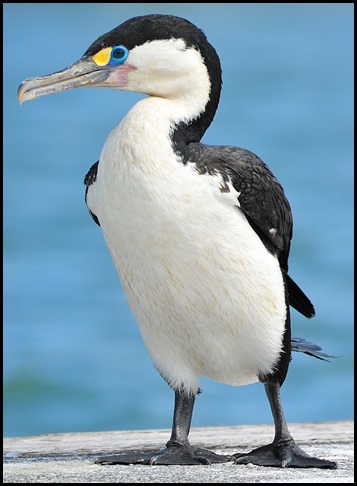 Lovely
eyes.
There are thirty six species of shag in the world, twelve
live in New Zealand and of those eight are endemic. Members of the shag family
belong to three groups based on the colour of their feet:- black, yellow or
pink. This chap is black-footed.
In New Zealand, all members of the Phalacrocoracidae are
called shags. Outside New Zealand, the black-footed shags are better known as
cormorants. According to Schuckard, the names "cormorant" and "shag" were
originally the common names of the two species of the family found in Great
Britain, the Great Cormorant, Phalacrocorax carbo and the European Shag, P.
aristotelis.
The name shag is thought to refer to the shaggy crest some species have on their
heads, especially during breeding season, which the
British forms of the Great Cormorant lack but the same species is called the
Black Shag in New Zealand where it has a small crest on upper nape and neck.
Despite this confusion, taxonomists still propose to divide the family into two
genera with the name "Cormorant" and "Shag". The proposed division into
subfamily Phalacrocoracinae "cormorants" and Leucocarboninae "shags" does indeed
have some degree of merit although the entire family cannot be clearly divided
at present beyond the super species or species-complex level. Several
evolutionary groups are still recognisable, but a great deal of convergent
evolution, such as cliff shags, is complicating matters. The resolution provided
by the mtDNA is not sufficient to properly resolve several groups to
satisfaction. In addition, many species remain unsampled for DNA, the fossil
record has not been integrated in the data, and the effects of hybridisation,
known in some Pacific species, on the DNA sequence data, are unstudied.
The pied shag is found exclusively in Australia and New Zealand, wintering along the whole coast and inland in both countries. It was first described from New Zealand by Latham, who used the specimens collected at Queen Charlotte Sound by Forster during Captain James Cook’s second voyage. This species is mainly marine, but occupies a variety of water bodies both offshore, on the coast and inland. Fish comprise roughly 90% of its diet, but it will also feed on crustaceans, and a few molluscs and cephalopods. It feeds exclusively by pursuit-diving and often forms feeding flocks at sea. Its breeding season varies considerably with region and year depending on local conditions, generally forming colonies in a variety of habitats, coastal islands, flooded tree plains, mangroves and sometimes on artificial structures such as beacons. The large nest is constructed from seaweed, twigs or sticks cemented together with droppings, and is placed in a tree or on the ground. Both parents build the nest, incubate the eggs and feed the young. Adults are basically sedentary, staying close to home, with juveniles dispersing widely. Babies will dive in the water, even before they can fly, if they feel threatened or see a predator, such as a kāhu (the Australasian harrier), the young chicks are very good at climbing back up to the nest.
ALL IN ALL HANDSOME CHAPS VERY HANDSOME INDEED |
